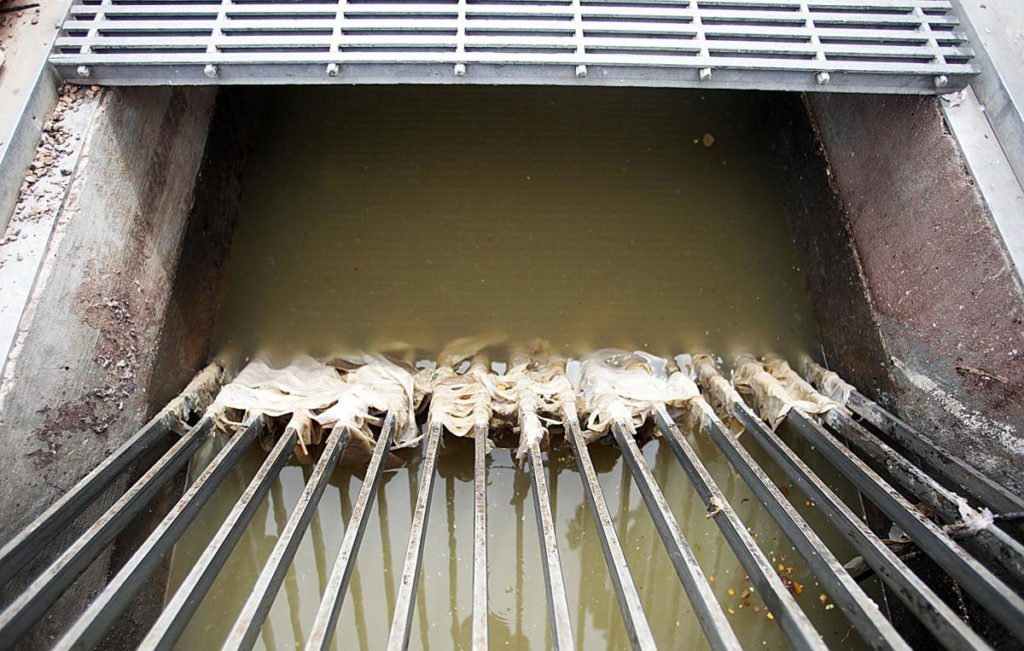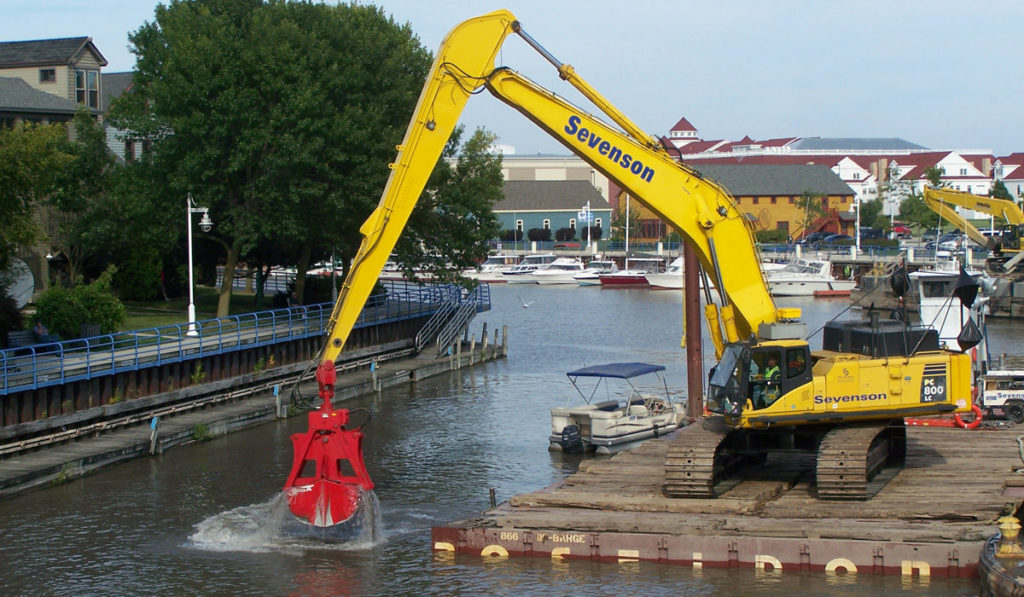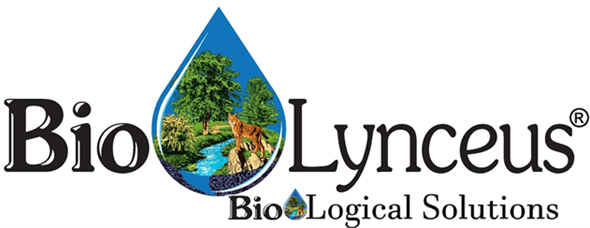Solids are an inevitable challenge in wastewater treatment. Even the world’s most efficient treatment systems must waste and dispose of some byproducts. The types of solids covered in this article are: trash (solid waste), organic solids, and inorganic solids (grit).
Materials that enter the collection system in large, complex, masses, such as rags, plastic bottles, and baby wipes, are considered trash. Organic solids are the undigested organic particles in sewage that make up much of the organic load of wastewater. Lastly, inorganic solids are things like sand, silt, clay, rocks, gravel, eggshells, coffee grounds and similar material.
Trash and inorganic material contribute to the proportion of solids that are not biodegradable in wastewater facilities. However, organic solids can be broken down by microorganisms in the treatment process. Reducing solids in wastewater treatment is essential for meeting effluent quality limits and maintaining proper process efficiency.
Having high concentrations of organic solids in treated wastewater discharge can be problematic for meeting federal, state and water quality standards. Federal and state regulatory agencies may fine wastewater utilities (or Publicly Owned Treatment Works (POTW)) for being out of compliance with National Pollution Discharge Elimination System (NPDES) limits.
In lagoon systems, buildups of various types of solids can seriously reduce the space available for treatment in some types of wastewater facilities. As this happens, the wastewater residence time is decreased, and the process efficiency can decline.
Trash and inorganic solids can obstruct or add wear and tear to mechanical components of wastewater treatment plants. Issues with these solids can increase plant maintenance demands and add to operation expenses.
Trash flushed down a toilet or washed into a combined sewer system can have serious consequences. A POTW can be penalized for sanitary sewer overflows (SSO) and combined sewer overflows (CSO) which result from solids blockages in collection lines.
The following list discusses five ways to reduce solids in wastewater treatment. Some items on the list are specific to a certain type of treatment process which is identified in the item description (Ex. lagoon system or mechanical plant).
The List
1. Prevent Trash From Entering The Collection System
The most logical way to reduce trash in wastewater systems is to prevent it from entering the collection system. This is easier said than done, but it doesn’t hurt to try.
Wastewater utilities can [a] install trash screening structures in sewer lines or over surface openings to combined sewer systems and [b] ask their citizens to be mindful of what they put down the drain. These prevention strategies can be used in any community no matter the collection or treatment process design.
[a] Screens and grates can be an effective way to prevent trash and large objects from entering the collection system. Coarse screens (or bar screens) and trash racks (or trash grates) can be placed over sewer drains or within sewer systems. Combined sewer systems are especially susceptible to having trash blockages.
Because combined sewer systems receive stormwater, trash from streets and parking lots can easily enter the collection system. Large floatable trash that gets caught in these systems contribute to CSO. CSO are inconvenient and financially taxing for wastewater utilities.

[b]Educate the community about the impact of trash in the sewer system. Community awareness of proper trash disposal and impacts on wastewater management is fundamental for preventing solids blockages and treatment issues. Domestic wastewater is full of solid waste.
Some are easily biodegradable and can be treated while others are plastic or complex paper products that are impossible to reduce with standard treatment. Items such as baby wipes, plastics bottle caps and sanitary wipes (the list goes on) should never be flushed down toilets or rinsed down sink drains. For that matter, limiting any form of solid material (organic or otherwise) from entering the collection system helps the POTW do their job properly.
Through education, the public can learn what they can and cannot put into the collection systems and how to prevent certain solids from going down the drain. Placing a screen over sink drains can provide an easy way to collect solids for proper disposal.
Additionally, having a convenient trash bin by the toilet can remind individuals to throw away baby wipes and floss instead of flushing them. Community outreach can raise awareness of issues with solids at local events.
Lastly, providing accessible web and print content on this topic can help the information spread from one mindful citizen to another. Thoughts like, “I can make a difference” and “I can reduce the environmental impacts of my wastewater” can empower individuals and eventually whole communities.
Benefits
[a] Mechanical screening methods work well for preventing trash in collection systems. They are also affordable and can be added into most municipal wastewater budgets.
[b] Education on trash in wastewater management can change common disposal practices and empower communities to reduce their environmental impacts. This prevention method is affordable and easy to implement using the internet and social media.
Limitations
[a] Trash screens and grates require daily cleaning to allow flows to move through them. Materials that are collected from screening devices need to be transported to a landfill. This process requires additional cost and handling.
[b] Whether community members will follow suggested solids trash disposal practices is completely up to them. Reducing trash in the collection system with this method can take time and persistence from the POTW.
2. Establish and Maintain a Good Headworks
Wastewater headworks systems are comprised of screening and grit removing equipment. Headworks are installed to remove [a] suspended (or floatable) solids/trash and [b] inorganic solids prior to the treatment process. This form of pretreatment can be implemented ahead of any type of wastewater treatment system no matter the size or design.
[a] There are several types of screen devices that prevent large solids and trash (including plastics, paper products, and woody debris) from moving past the headworks to the treatment system. These include, but are not limited to: manual bar screens, automatic bar screens, and all-in-one headworks machines.
Standard manual bar screens use vertical bars with 1 to 2 inch spacing to catch trash and debris. The solids caught in these types of screens must be raked manually to be removed. Second, automatic bar screens are similar to manual bar screens but are equipped with mechanical raking capabilities.
Third, all-in-one headworks machines combine screening, grinding, and compacting technologies to remove solids. Equipment of this type mechanically grinds solids in wastewater streams, the water flows through the screen and the solids are retained on it. The screened solids are then dumped into a bin for disposal.
[b] Grit chambers remove inorganic solids in headworks systems. Reducing inorganic materials during pretreatment is important because these solids contribute to mechanical issues and increased solids disposal costs for wastewater utilities.
Standard grit chambers have long, circular tanks that are designed to slow the velocity of wastewater. When the velocity is decreased, sediments and other inorganic solids settle out and are collected for disposal.
Other designs use vortex technology which circulates wastewater so that heavier solids are separated from the water and removed. Grit removal systems may be are cleaned both manually and or automatically depending on the equipment type.
Benefits
[a]There are many options available for headworks equipment. A POTW can establish some form of trash removal no matter their size or treatment technology.
[b] Grit removal systems reduce maintenance issues and costs in downstream wastewater treatment processes. They can also be applied in a variety of small and large-scale headworks.
Limitations
[a]Establishing headworks infrastructure can be expensive. Building materials and mechanical headworks equipment can consume a considerable part of the POTW budget.
[b] Grit removal systems require regular cleaning and maintenance. Purchasing an effective grit chamber removal system can be expensive if a headworks receives heavy inorganic loads.
3. Improve Biological Solids Reduction
Most treatment facilities rely on the residual bacteria in wastewater to degrade organic material in the treatment process. However, the bacteria that are abundant in most wastewater originate from the human gut. Thinking about this brashly, if these organisms were efficient at degrading solids, the human body would not need such a complex waste disposal system.
To improve solids reduction in wastewater treatment, communities of bacteria from natural soils and sediments may be added to wastewater streams. This process is called bioaugmentation. Added microbiology from natural environments to the wastewater treatment process helps develop a biomass that can effectively break down structural plant compounds (cellulose) and increase solids removal.
Bioaugmentation can be applied in [a] lagoon systems and [b] mechanical plants.
[a] When lagoon systems are augmented with bacteria for reducing solids (sludge), the process is called biodredging. Added bacteria in the lagoon treatment degrade accumulated solids. Over time, the quantity of solids residing at the bottom of the treatment process are reduced.
Lagoon systems are typically inoculated with biology at the influent or lift station ahead of the process.
[b] Mechanical treatment plants use bioaugmentation to better reduce organic material in wastewater. The residual biology in treatment facilities can be overwhelmed by heavy solids loads and may require additional biology to degrade them. Introducing the right wastewater bacteria into these plants can reduce the quantity of solids and can make remaining solids more manageable.
Clumps of dead and living biomass account for a portion of solids in wastewater plants. Depending on the types of organisms that are most abundant in the plant, the biomass will have a higher or lower settleability. Filamentous bacteria (FB) consume organic material but do not settle properly. These organisms can cause wastewater plant effluent to have high total suspended solids concentrations which can bring the discharge out of compliance with NPDES limits.
Implementing good bacteria with bioaugmentation can increase solids settleability by reducing the quantity of FB in wastewater processes. Bacterial cultures are typically inoculated at the headworks of mechanical systems, so the organisms will have the most time to degrade solids.
Benefits
[a] Biodredging is highly effective in wastewater lagoon systems because of the long residence time of wastewater. This process reduces the cost to mechanically dredge these facilities.
[b] Bioaugmentation reduces organic loads in mechanical plants. Solids settling can also be improved for easier handling and recycling.
Limitations
[a] Consistent doses of biology need to be added to the lagoon system to achieve the best results. This increases operation costs.
[b] Biological solids reduction in mechanical plants is most limited by wastewater residence times. Wastewater is processed for shorter amounts of time in these systems, so solids reduction can be less or can take longer.
Mechanical Dredging
This method of solids removal is specifically used in wastewater lagoon systems. Lagoon facilities not designed to reduce solids (or sludge) within the treatment process. Therefore, the solids in lagoons settle to the bottom and accumulate leaving treated wastewater at the surface relatively free of particulates.
The excess solids can be reduced biologically (as discussed above) or mechanically. Mechanical sludge removal is called dredging. This process involves [a] removing the sludge [b] dewatering and [c] disposing of it.

[a] A floating dredge is used to dredge the wastewater solids at the bottom of lagoons. This machine digs out sludge to increase the wastewater holding capacity of the lagoon. Treatment efficiency is increased after dredging because with increased capacity there is more time for the treatment processes to work. (The frequency of mechanical dredging depends on how quickly solids accumulate in the system and the impact the accumulating solids have on the treatment processes.)
[b] Once sludge is dredged from wastewater lagoons, the material needs to be dewatered and hauled to a landfill. Solids are squeezed through a dewatering machine to remove much of the liquid contents. Next, the dewatered sludge is loaded into trucks and hauled to a disposal site.
Benefits
[a & b] Mechanical solids removal is highly effective and relatively fast. Machines can dig out years of sludge buildup in a matter of days.
Limitations
[a & b] Mechanical dredging is expensive and can exceed small community wastewater budgets. The cost of dredging, dewatering, and hauling dewatered sludge is $300 to $500 per dry ton.
5. Solids Digestion
Solids in mechanical activated sludge plants are handled within the system design. As part of the wastewater treatment process, solids are [a] settled out in a clarifier [b] are removed or “wasted” from the activated sludge, and sent to a digester or solids thickening tank. After digestion or thickening, wasted solids are may be dewatered and disposed in a landfill or land-applied.
Advanced communities or districts send wasted solids to an anaerobic digester where bacteria breakdown organic material and release methane gas (biogas). The methane gas may be used to heat parts of the facility, generate electric power, provide fuel for vehicles, or cleaned and put into the natural gas pipeline.
The solids remaining after anaerobic digestion may be used as a soil amendment to help crop production on nearby farmland.
Benefits
Activated sludge processes are effective in reducing suspended solids among other wastewater constituents. Solids wasting removes undigested solids from the liquid treatment process. The volume of wasted solids is reduced by digestion and the remaining solids are disposed of or land-applied.
When anaerobic digestion is used, the biogas or methane produced during anaerobic digestion can be used as a fuel source for various beneficial purposes.
Limitations
[a & b] The activated sludge process is dependent on a settling biomass. FB often grow abundant in these systems preventing proper settling from occurring. In such circumstances, solids are not properly wasted or returned to keep the process going. Additionally, hauling solids for disposal is expensive.
Closing Thoughts
The items on the list that can help reduce solids in any type of treatment facility include: 1. Preventing trash from entering the system through education and mechanical screening, 2. Installing and maintaining a headworks facility, and 3. Implementing a bioaugmentation program.
Bioaugmention in mechanical wastewater treatment systems can improve organic solids decomposition and help improve solids settling. Bioaugmentation can also reduce solids disposal and sludge hauling costs for lagoons and mechanical wastewater facilities.
Mechanical dredging is specific to lagoon systems and while solids wasting followed by thickening or digestion is used in the activated sludge facilities.
Obviously, there is not just one way to manage solids in wastewater treatment. The above list is a useful tool to help understand several of the options available for reducing solids.
